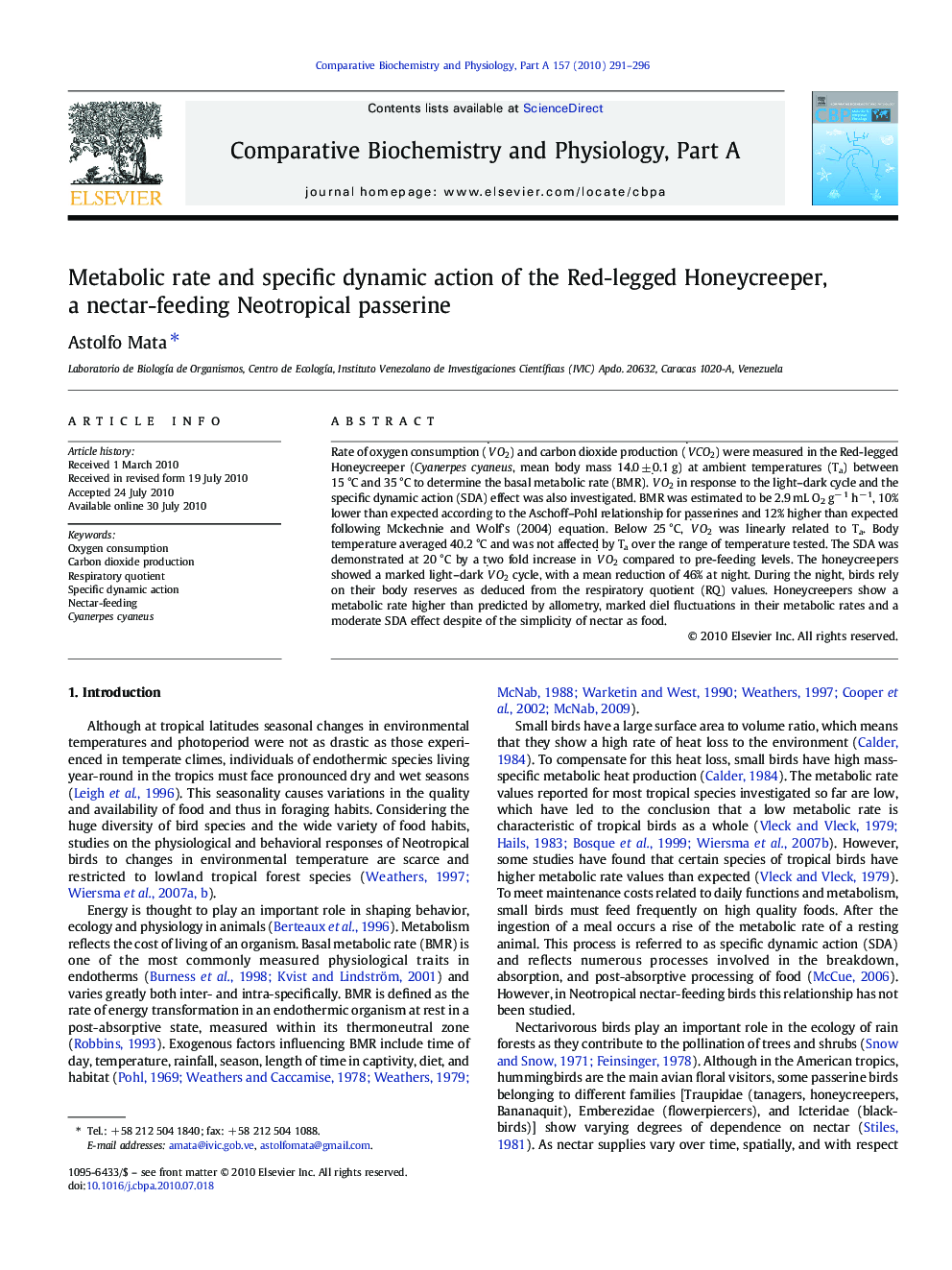| Article ID | Journal | Published Year | Pages | File Type |
|---|---|---|---|---|
| 1974111 | Comparative Biochemistry and Physiology Part A: Molecular & Integrative Physiology | 2010 | 6 Pages |
Abstract
Rate of oxygen consumption (VËO2) and carbon dioxide production (VËCO2) were measured in the Red-legged Honeycreeper (Cyanerpes cyaneus, mean body mass 14.0 ± 0.1 g) at ambient temperatures (Ta) between 15 °C and 35 °C to determine the basal metabolic rate (BMR). VËO2 in response to the light-dark cycle and the specific dynamic action (SDA) effect was also investigated. BMR was estimated to be 2.9 mL O2 gâ 1 hâ 1, 10% lower than expected according to the Aschoff-Pohl relationship for passerines and 12% higher than expected following Mckechnie and Wolf's (2004) equation. Below 25 °C, VËO2 was linearly related to Ta. Body temperature averaged 40.2 °C and was not affected by Ta over the range of temperature tested. The SDA was demonstrated at 20 °C by a two fold increase in VËO2 compared to pre-feeding levels. The honeycreepers showed a marked light-dark VËO2 cycle, with a mean reduction of 46% at night. During the night, birds rely on their body reserves as deduced from the respiratory quotient (RQ) values. Honeycreepers show a metabolic rate higher than predicted by allometry, marked diel fluctuations in their metabolic rates and a moderate SDA effect despite of the simplicity of nectar as food.
Related Topics
Life Sciences
Biochemistry, Genetics and Molecular Biology
Biochemistry
Authors
Astolfo Mata,
